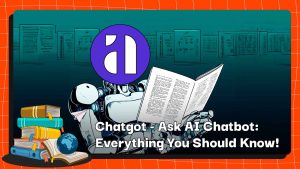How Strong Will MakerDAO Ecosystem In The Next Time?
Key Points:
- When MakerDAO submits an “Endgame Plan”, it evolves while remaining flexible.
- Spark Protocol is committed to building new decentralized financial products and growing the Maker protocol ecosystem.
- In essence, Maker will become a Layer 1-like environment, allowing “everything to grow.”
MakerDAO, a seasoned cryptocurrency project, has entered what it terms an “Endgame Plan.” Maker intends to build an ecosystem like Layer 1 by constructing numerous SubDAO generals, enabling “anything to develop.”
Spark Protocol
When the founder of MakerDAO submitted the “Endgame Plan” in June of last year, he stated that MakerDAO must continue to grow while remaining flexible. As a result, on February 9, 2023, certain members of MakerDAO’s core unit team formed Phoenix Labs, a company focused on developing new decentralized financial products and growing the Maker protocol ecosystem.
Phoenix Labs’ initial protocol, Spark Protocol, is committed to building new decentralized financial products and growing the Maker protocol ecosystem. Over-borrowing is permitted using the stablecoin DAI and other mainstream encrypted assets as collateral in the general-purpose lending protocol.
The protocol is based on the Aave V3 code, which has been extensively tested in the market. Users may utilize highly liquid assets as collateral, such as ETH, WBTC, stETH, and so on, and lend the corresponding assets based on the interest rate model.
In principle, it will be compatible with Maker’s low-cost D3M loan module and the almost 100% capital-efficient PSM stablecoin casting pool, resulting in a tremendous synergy that gives the most competitive and reasonably stable interest rate in the whole DAI market.
The Spark team has declared that once the DAI borrowing scale reaches $100 million in the next two years, it will donate 10% of the DAI market’s revenues to Aave and has begun a proposal on the Aave forum.
Benefits of the Spark Protocol
Code that has been tried and tested
The code has passed the historical test and has strong security due to Aave’s mature code update. Depositors, like aTokens, receive tokenized (spTokens) representations of their positions. spTokens may be exchanged and traded on Ethereum just like any other cryptoasset, enhancing capital efficiency even more.
Loans with low and consistent interest rates
Spark Lend has direct access to Maker’s line of credit, known as the Dai Direct Deposit Module (D3M), and users could potentially borrow any amount of Dai at a little higher interest rate than the Dai Savings Rate (currently 1%). (But, there is a restriction of 200 million at the start.)
ETH assets have a high use efficiency
Spark Lend also debuted the Aave V3 e-Mode module. ETH assets can be inter-borrowed with a maximum LTV of 98%. Staked wstETH, for example, can lend up to 98% of ETH, boosting the efficiency of fund utilization.
Manipulation of two Oracle pricing feeds is more challenging.
To deliver on-chain pricing, Spark may employ ChronicleLabs (previously Maker Oracles) and Chainlink dual data sources. These two data sources will be processed via three checkpoints of TWAPs (weighted average prices), signature price sources, and circuit breakers to guarantee that prices are not manipulated.
Fair environment
Protocol tokens are distributed purely through liquidity mining, with no pre-allocation. A fair distribution system can entice more individuals to join the group while also improving consensus and value. The project team also feels that in order to get SubDAO support and acceptance as a product, Spark Protocol must compete on a level playing field.
MakerDAO’s full support
Spark is not a traditional “independent tripartite” arrangement. Although Phoenix Labs created the agreement, it is entirely controlled by Maker Governance (including all smart contracts, trademarks, IP, and so on), which implies that if the agreement encounters any issues that cannot be resolved independently, Maker will most likely step in to address the problem.
Three Efforts to Improve the DAI as a “Global Currency”
Maker’s objective is to build a “fair world currency,” yet DAI’s $5 billion market size is dwarfed by USDT’s $70 billion market cap. So, how does it grow and finally outperform centralized stablecoins?
The introduction of the Spark Protocol signals three important avenues for the future development of Maker goods, all of which aim to raise the quantity of DAI mined while lowering the cost of use:
Integration of internal D3M and PSM functions
Spark Lend combines Maker’s existing D3M, while the PSM module offers liquidity for the stable currency DAI.
The most significant advantage of D3M is that it allows the secondary market to directly mint DAI, eliminating the need for the first-level minter to mint in Maker and then deposit DAI in the secondary market for application, as well as merging the two layers of excess collateral Form a layer to improve DAI’s actual capital efficiency.
The original aim is to give USD 300 million in D3M liquidity to Spark Lend, with $200 million serving as a hard cap for the first phase and USD 100 million serving as buffer funds. This size restriction will, in principle, be changed based on the actual market lending rate performance.
Also, MakerDAO’s PSM and DSR will be supported on the Spark Lend front-end website. USDC holders may easily change USDC in PSM into DAI via the Spark Protocol’s official website, and earn deposit interest via DSR, boosting DAI adoption from the demand side.
For example, the outflow of 1 DAI from Aave in the loan market via the regular channel has two layers of collateral: about $1.5 in Aave collateral plus $1.5 in Maker vault. Without taking into account the revolving loan, this Typical situation costs $3 in encrypted asset collateral, but after integrating D3M and PSM, lending 1 DAI on Spark only requires $1.5 in collateral (or $1 in whitelisted stablecoins like as USDC), considerably improving capital efficiency.
Access the LSD market via EtherDAI
The usage of EtherDAI will be initiated using the Spark Protocol. EtherDAI is a liquid mortgage derivative based on ETH, such as Lido’s stETH; users may bundle stETH into ETHD and lend DAI using it as security.
Maker governance will have backdoor access to ETHD collateral, which might be used to incentivize liquidity by establishing ETHD/DAI short-term liquidity mining on Uniswap. On the other side, the stability charge of EtherDAI Vault can be adjusted to zero in order to influence the demand for EtherDAI Vault.
Second, following the upgrading of Ethereum Shanghai, it is comparable to the fact that the official Ethereum will give more than 4% of the basic income, resulting in a large-scale movement of ETH assets. Spark enables liquid staking derivative (LSD) encapsulation tokens to prevent TVL from diminishing, and it may even lure new money into the agreement through income superposition, lowering reliance on USDC.
Most crucially, TVL indicates the agreement’s lock-up value for the money. When the TVL in the agreement increases, the liquidity and availability grow, and the agreement itself can gain significant benefits. Depositing lending margins amongst borrowers is a significant source of revenue for Spark.
Maker + Spark Equals the market’s lowest rate with predictable volatility
The introduction of the Spark protocol will also allow Maker to more actively regulate DAI supply depending on market demand, allowing it to connect directly with its secondary market in order to provide higher interest rates to its consumers while expanding DAI supply.
While the DeFi sector is thriving, lending rates tend to skyrocket, prompting consumers to pay higher-than-expected loan expenses, which has a detrimental influence on the DAI supply and demand market.
By stabilizing the DAI rate, D3M will have an influence on the major DAI lending market. When there is a large market demand for DAI, Maker might increase Spark’s hardcap for minting and delivering DAI to reduce its rate. If demand is minimal, DAI liquidity will be taken from Spark in order to raise its rate.
Keeping $DAI at the lowest possible price in the stablecoin fight, with predictably fluctuating loan rates, is a crucial competitive advantage in boosting its adoption. The D3M fund pool can achieve relative stability of the $DAI borrowing rate as well as the most competitive interest rate in the whole market.
MakerDAO protocol’s current balance of payments
MakerDAO presently costs over $40 million each year. If it does not spend actively on RWA financial management, the project will incur a net loss of 30-40 million yuan. As a result, the creator has developed an “End Game” plan to boost income while decreasing expenses.
Income
MakerDAO’s current revenue is mostly derived from four sources:
- Overcollateralized Vault’s stability fee income, i.e. minting/borrowing DAI interest;
- Liquidation penalty income from undercollateralized asset liquidation;
- PSM earns stablecoin transaction fees;
- RWA (Real Assets) Vault revenues.
The crypto asset vault’s stability fee used to be the most important source of money for the agreement, but RWA’s current wealth management income has surpassed it.
Expenditure
The majority of agreement expenditures include staff pay, market growth/marketing expenses, and the salary of engineers who maintain the core of the agreement.
In June 2022, MakerDAO co-founder Rune Christensen released data indicating that MakerDAO’s annual income from the stability fee is approximately $51.4 million, but the cost of maintaining the agreement is $60.9 million, including cash flow of 43.6 million US dollars and The cost of $1,730 MKR denominated in $DAI has exceeded the agreement revenue, resulting in a loss of approximately $9.4 million for the agreement.
- Headcount: ~115
- Annual cash burn rate of 43.6 million MKR compensation in DAI terms is estimated at $17.3 million
- Makerburn stability fees: $51.4 million
- Annual loss: $9.4 million.
The following are the primary reasons for the agreement’s termination:
1) The agreement’s income has declined dramatically in the bad market scenario;
2) The team has large costs;
3) Governance redundancy. The current governance process is complicated, involving the participation of a large number of individuals, and the governance cycle is too protracted, limiting the pace with which new product features may be developed.
As a result, Rune Christensen suggested the concept of The Endgame Plan, which we shall discuss in depth below. This strategy provides a remedy to the present protocol’s failure to make ends meet, namely, increasing RWA (real-world assets) growth.
Endgame Plan, all things grow
It is vital to comprehend the “Endgame Plan” in order to better grasp the forthcoming big changes in the Maker ecosystem and the improvement of the supply and demand relationship of MKR tokens. While there are numerous disputes in this strategy to deal with legislation and politics. In essence, Maker will become the same environment as Layer 1, enabling “anything to flourish.”
Rune originally presented the endgame proposal in June 2022, and there have been at least three iterations of full-member debates on the governance forum. This is a MakerDAO structural reorganization plan that intends to transform MakerDAO into a decentralized, self-operating DAO in order to better serve the demands of its stablecoin Dai users. It has four important components in particular:
- Creating MakerDAO’s Whole Decentralization
- Enhancing Dai’s liquidity and interest rate stability
- Increase protocol sustainability while lowering system risk
- Enhancing DAO operations and decentralized governance
Maker will construct a succession of self-sustaining DAOs dubbed MetaDAO among them to reduce the complexity of governance. Maker Core, according to Rune, is secure yet sluggish and pricey. MetaDAO is an L2 solution that may be quick and versatile while providing L1 security.
MakerDAO can focus more on its core purpose, which is issuing and stabilizing the stablecoin Dai, thanks to MetaDAO. At the same time, MetaDAO may help other projects in the MakerDAO ecosystem with governance.
The modularization of the Maker protocol is referred to as MetaDAO. Each MetaDAO is a micro-community with its coins and treasury. MataDAO’s main value proposition is identifying, reducing risk, and parallelizing Maker’s extremely complicated governance process.
MetaDAO will be classified into three types:
Maker Core keeps all components that are necessary for the Maker Protocol to work properly and fulfill its aims of producing and preserving Dai. Each form of MetaDAO encircling the Core has a specific purpose, which defines how it interacts with the Maker Core:
- Governor (also known as Facilitator) is in charge of organizing Maker Core’s decentralized employee management, on-chain governance, engineering, protocol management, and brand management;
- Creator focuses on the growth of the Maker ecological chain and the development of new functions, such as the Spark team;
- Protector will manage the RWA Vaults, focusing on real-world assets, and protecting Maker from physical and legal threats to its real-world as well as physical and legal threats to its real-world as well.
MetaDAO, like Maker Core, has a governance procedure. By deploying additional ERC-20 tokens for governance, MetaDAO can solve the present Maker governance process’s single-threaded limitation, allowing MetaDAO to execute in parallel and speed up the governance process.
Nevertheless, MetaDAO’s governance mechanism is built on top of the Maker Core governance infrastructure, with MetaDAO voters sending governance signals that are then packed and implemented in Maker Executive Vote. This means that MKR holders can function as an “appellate court,” and MKR voters truly govern the MetaDAO agreement.
The overall strategy is separated into four stages. The Pregame stage team is scheduled to go live in 2023, including the creation of ETHD, the launch of MetaDAO, and the beginning of liquidity mining, among other things.
Spark Protocol, the first MetaDAO, is scheduled to start in April 2023. It is now undergoing mainnet deployment as well as a number of branding initiatives. Spark intends to combine with Element Finance and Sense Finance in the second part of this year to provide fixed-rate loans and more diverse revenue methods.
Maker will launch six MetaDAOs in the early stages of the Endgame plan, with each MetaDAO issuing Sub Tokens. Although the Spark Protocol does not explicitly mention tokens, according to the idea and the Spark founder’s explanation, Spark should have its own tokens.
At the same time, each Sub Token will join forces with MKR to establish a core liquidity pool. The Maker team intends to distribute 45,000 MKR every year as an LP incentive for this pool, which implies that each MetaDAO will acquire 7,500 MKR over the Endgame period. Of course, liquidity pools associated with ETHD, DAI, and MKR will also earn token incentives.
As the first implementation of the endgame plan, Spark is intended to bring Maker an annual income increase of $10 million or more, while also allowing the MKR token to have a liquidity mining situation for the first time, as we shall see below.
DISCLAIMER: The Information on this website is provided as general market commentary and does not constitute investment advice. We encourage you to do your own research before investing.
Join us to keep track of news: https://linktr.ee/coincu
Harold
Coincu News
























